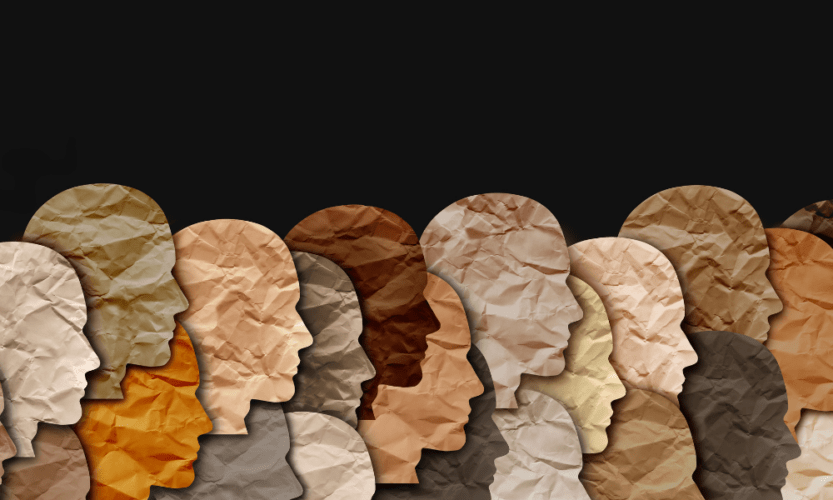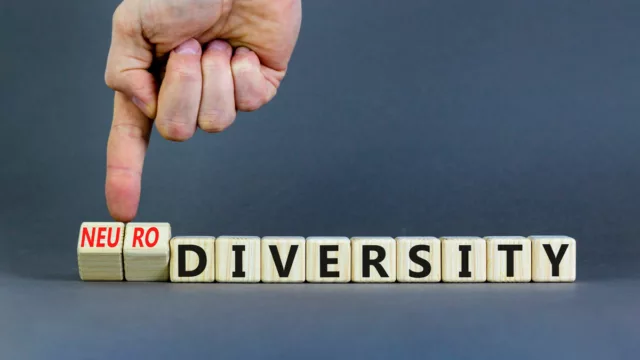How to promote diversity and inclusion in the workplace

Equality, diversity and inclusion all go hand-in-hand – put simply, embracing equality and diversity at work helps create an inclusive organisational culture. It encourages staff loyalty, and promotes better employee engagement and productivity while showing commitment to good business ethics.
When we refer to equality and diversity, you may think of words such as ‘equal opportunities’, ‘protection’, ‘respect’, ‘unique’ and ‘fairness’. These are all spot on.
To expand, equality is defined as equal opportunities and fairness for all.
Diversity is defined as recognising and valuing that individuals are unique and all have their own set of beliefs, values, cultural experiences, ethnic backgrounds and life experiences.
Inclusion is a respect for and appreciation of these differences – the deliberate act of welcoming and valuing diversity and equity. An inclusive workplace can help lower the risk of bullying, harassment and discrimination.
While many employers have been placing a greater significance on equality, diversity and inclusion in the workplace over the last few years, there is still room for improvement. Unfortunately, given the COVID-19 pandemic, diversity and inclusion receded as a strategic priority for many employers; however, as we begin to come out of the other side, we should start to place this high on our agenda if we want to make long-lasting changes. So just how do you raise awareness of equality and diversity in the workplace?
“Five stars”
“I found the training delivered by Victoria to be very informative, well delivered and engaging. I found the group discussion encouraging and helpful” Read the full review
Equality, diversity and inclusion policies
An equality, diversity and inclusion policy will outline the company’s and individuals’ responsibility for maintaining and promoting E,D&I in the workplace, creating a sense of belonging and a harmonious work environment. It should educate employees on the types of discrimination there are, outline the procedure of how E,D&I should be upheld and the process employees should follow for any concerns or observed wrongdoing. An E,D&I policy should also include how the organisation will monitor and measure the success of the policy.
As a priority, a review of your inclusion and diversity-related company policies and procedures is vital to ensure they are current and compliant with the law and best practices. These may include a grievance policy; whistle-blowing policy; anti-bullying and harassment policy; code of conduct; health, safety and wellbeing policy; recognition programs; and an equality, diversity and inclusion policy. These not only support and demonstrate inclusion through fair and transparent processes but also act as a prompt to your staff, as to what is and is not tolerated.
Protected Characteristics
The Equality Act 2010 sets out 9 personal characteristics which are protected from discrimination and harassment, these are age, race, sex, marital & civil partnership, pregnancy & maternity, religion or belief, sexual orientation, disability and gender reassignment.
Employers can protect their employees against discriminatory treatment by implementing clear policies and procedures which align with E,D&I requirements which ensure no one is treated any less favourably because of a personal characteristic.
In certain justifiable circumstances, you may lawfully be able to discriminate if there is an occupational requirement; this is also known as positive discrimination. This could include requesting a certain gender for a role as they are required to look after vulnerable individuals of a certain gender. Another type of positive discrimination could be favouring a certain underrepresented ethnic group in your organisation in a recruitment process in order to diversify talent. This still poses some risk of an unlawful discrimination claim, so this must be done carefully following a thorough process.
Bullying in the workplace
Clear policies and legislation set the precedent that bullying in the workplace is unacceptable. They can help employers navigate cases of workplace bullying by highlighting the types of bullying and discrimination and outlining a process of how concerns of bullying can be reported and how complaints should be handled.
To find out how to deal with workplace bullying, take a look at our article about Workplace Bullying.
Provide equality, diversity and inclusion training
Training is a key component in supporting equality, diversity and inclusion (EDI). Training helps raise awareness, explore EDI values and behaviours, reinforce organisational expectations and encourage personal reflection in your employees’ thinking and mindset.
Training can help to facilitate discussion around sensitive and difficult subjects like unconscious bias and nurtures conversation on how to improve workplace culture and inclusion. EDI training can also mitigate any vicarious liability as a result of your team members’ actions (for more information on this, please read our How to avoid discrimination in the workplace blog).
Over time, people can become complacent, so it is a good idea to include equality, diversity and inclusion training during the induction stage for new employees, and at regular intervals throughout employment.
Be aware of unconscious bias
It’s fair to say that most of us believe we are ethical, open-minded and unbiased when it comes to race, gender, class etc. But research shows that in reality, most of us do have feelings of bias in some form, albeit unconscious and hidden, and therefore fail to meet our own inflated self-perception.
Our unconscious mind can influence decisions without necessarily being fully aware of what we are saying or doing. We see what we believe we should see and hear what we believe we should listen for.
These actions can have a significant impact on others so before making snap conclusions about colleagues, consider these tips to improve
take time to recognise your personal bias might be clouding your judgement;
- Think through your rationale before acting;
- Be accountable for checking your own bias and ask others for a second opinion if you are unsure;
- Never assume, so be sure to ask people about their lived experiences, this is the best way to find out more about people;
- Consider implementing unconscious bias training in your organisation.
Equal Opportunities in Employee Recruitment
The Equality Act 2010 protects people from discrimination related to any of the nine protected characteristics. To ensure applicants are not excluded on the grounds of a protected characteristic and to help attract a diverse range of applicants, use gender-neutral language and have a clear statement of your commitment to EDI. Ensure that any reasonable adjustments are made for applicants with a disability and ensure your record keeping is kept on file (in line with your GDPR process) for fairness and transparency.
Your decision to hire must be firmly based on an applicant’s demonstration of their skills, knowledge and ability to do the job. It is, therefore crucial to implement processes which help mitigate biases such as confirmation bias or implicit bias.
People, society and the law are ever-changing, and awareness-raising needs to be an ongoing priority in the workplace.
If you need help developing appropriate policies and guidelines to create a more inclusive culture or you would like to arrange for MAD-HR to deliver EDI Awareness training within your workplace, please get in touch with a member of our team who will be happy to discuss this further.
Frequently Asked Questions
Useful questions and answers about “How to promote diversity and inclusion in the workplace”
Why is diversity and inclusion important in the workplace?
A focus on diversity and inclusion can benefit your business because it leverages varied perspectives, driving creativity and innovation.
How do you demonstrate diversity and inclusion in the workplace?
As part of an overall diversity and inclusion strategy, ensure that everyone is trained to understand equality, diversity and inclusion (EDI.) As the employer, embed EDI considerations in all people processes and foster a culture of respect and belonging. You could also consider measuring and monitoring your EDI performance.
What is the difference between equality and diversity?
Equality ensures that everyone is treated fairly and the same whereas diversity recognises and celebrates differences.



